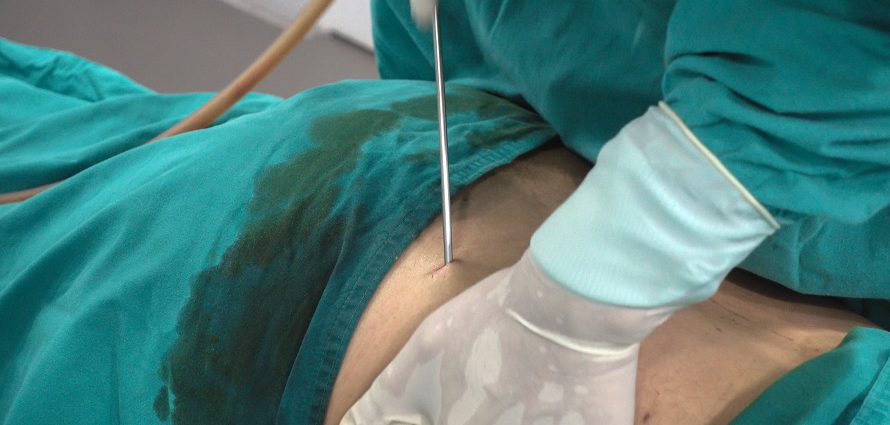Tumescent Liposuction Surgery – What is the Difference?

Reviewed by Julius Few, MD
Liposuction is a cosmetic surgery procedure that removes fat deposits from specific areas of the body, including the stomach, hips, thighs, buttocks, face and neck. Liposuction techniques have evolved over time, and today there are many choices — including the tumescent liposuction technique.
The basic steps are the same with all liposuction procedures. Incisions are made in the skin, and fat is suctioned out from beneath the skin using a thin tube known as a cannula. Liposuction techniques differ in two main ways — the amount of wetting solution used to dilute the fat and the method used to break up the fat cells, such a laser or sound waves. What distinguishes tumescent liposuction from other forms of the procedure is that it uses the largest amount of wetting solution.
The Tumescent Solution (Wetting Solution)

Wetting solutions are infused into the fatty layer of your skin before the fat is vacuumed out. Before wetting solutions came along, surgeons went in dry, and the result was bleeding and bruising.
The tumescent solution contains salt water, adrenaline and a local anesthetic. The adrenaline shrinks blood vessels to minimize blood loss in the fat to be extracted. This infusion causes the skin to become swollen and firm. The tumescent technique uses more fluid than other available liposuction methods, infusing two to six times as much fluid as the volume of the fat to be removed.
The Tumescent Liposuction Procedure
During tumescent liposuction, your surgeon first marks the area on your body where he or she will remove fat. Next, the agreed-upon method of anesthesia is administered: local, IV sedation or general anesthesia. Tumescent liposuction usually involves a local anesthesia injection, which eliminates some of the risks and aftereffects associated with general anesthesia. The anesthetic contained in the tumescent solution helps numb the treated area before and after the procedure.
Next, your surgeon administers the solution directly into the fatty deposits under your skin, in preparation for the procedure. He or she then threads a thin cannula into the fatty layer of your skin through a small opening in the skin. The cannula is attached to a vacuum-like device. Your surgeon guides the cannula back and forth and vacuums out the fat into a sterile collection tube. Depending on the surgeon’s preference, laser or ultrasound can be used to make the fat removal easier and potentially more effective. Check with your surgeon to find out what is best for you.
You will be instructed to wear a support garment on the treated area for several days to several weeks, depending on your surgeon’s preference. Your surgeon will go over any recovery information with you. Following his or her advice can help minimize any complications.
Tumescent Liposuction Cost
Tumescent liposuction cost varies based on the area of the body being treated, and how many areas are being treated. The cost is higher for large areas of the body such as the abdomen, and lower for body parts such as the outer thighs or neck. The cost is comprised of the surgeon’s fees, anesthesia fees and facility fees. Other factors that affect the cost include the type of liposuction. For example, laser liposuction is more costly than traditional liposuction. Discuss the cost with your plastic surgeon during your initial consultation. If cost is prohibitive, financing plans may be available.
Tumescent liposuction is not for everyone. Many liposuction techniques are available, including laser liposuction, ultrasound-assisted liposuction and water-assisted liposuction. Each has its own set of advantages and disadvantages. Your surgeon may recommend a certain technique depending on whether you are undergoing facial liposuction or body liposuction.
The best way to determine which liposuction technique is right for you is a thorough consultation with a board-certified plastic surgeon. After a frank discussion of your goals, along with a physical examination, the surgeon will assess your liposuction candidacy. Your surgeon will then discuss the various options, steps involved, results, risks, recovery and expected liposuction cost with you.
We can help you find a top-notch local surgeon.
About the Reviewer of This Article
Julius Few, MD, is the founder of the Few Institute For Aesthetic Plastic Surgery in Chicago. Board certified by the American Board of Plastic Surgery and the American Board of Surgery, he is also a clinical associate professor in the division of plastic surgery at the University of Chicago and the current president of the Illinois Society of Plastic Surgeons.
Dr. Few received his medical degree from the University of Chicago Pritzker School of Medicine, and completed his residency in general surgery at the University of Michigan Medical Center in Ann Arbor, followed by plastic surgery training at Northwestern University in Chicago. He has also received special facial and eye cosmetic training in Honolulu, New York and Atlanta.


